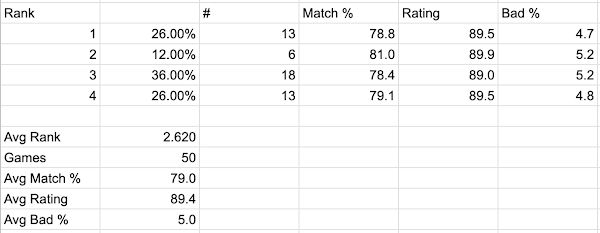Push Fold Fundamentals: Keiten
If you haven't already, check out the first post in the push fold fundamentals series. What is Keiten? The term keiten refers to a tenpai hand with no yaku. Although these hands rarely win by ron or tsumo, they can gain points if a round goes to exhaustive draw (a.k.a. Ryuukyoku, rkk). In this post, we will analyze the EV of pushing dangerous tiles against 1 riichi with 5 or fewer draws until rkk. In the context of push/fold within 5 turns of rkk, we will incorrectly use the term keiten to refer to tenpai hands with or without yaku. There is a practical reason for this: if we decide that we should push a tenpai hand with no yaku, it follows that we would push the same hand if it had a yaku. Data Sources The main chart we will analyze in this post will be from this Mahjong Math post , which uses the nisi simulator to estimate EV. If you find this post helpful, consider supporting the Mahjong Math group by purchasing the post for 500 yen, which will give you access t


